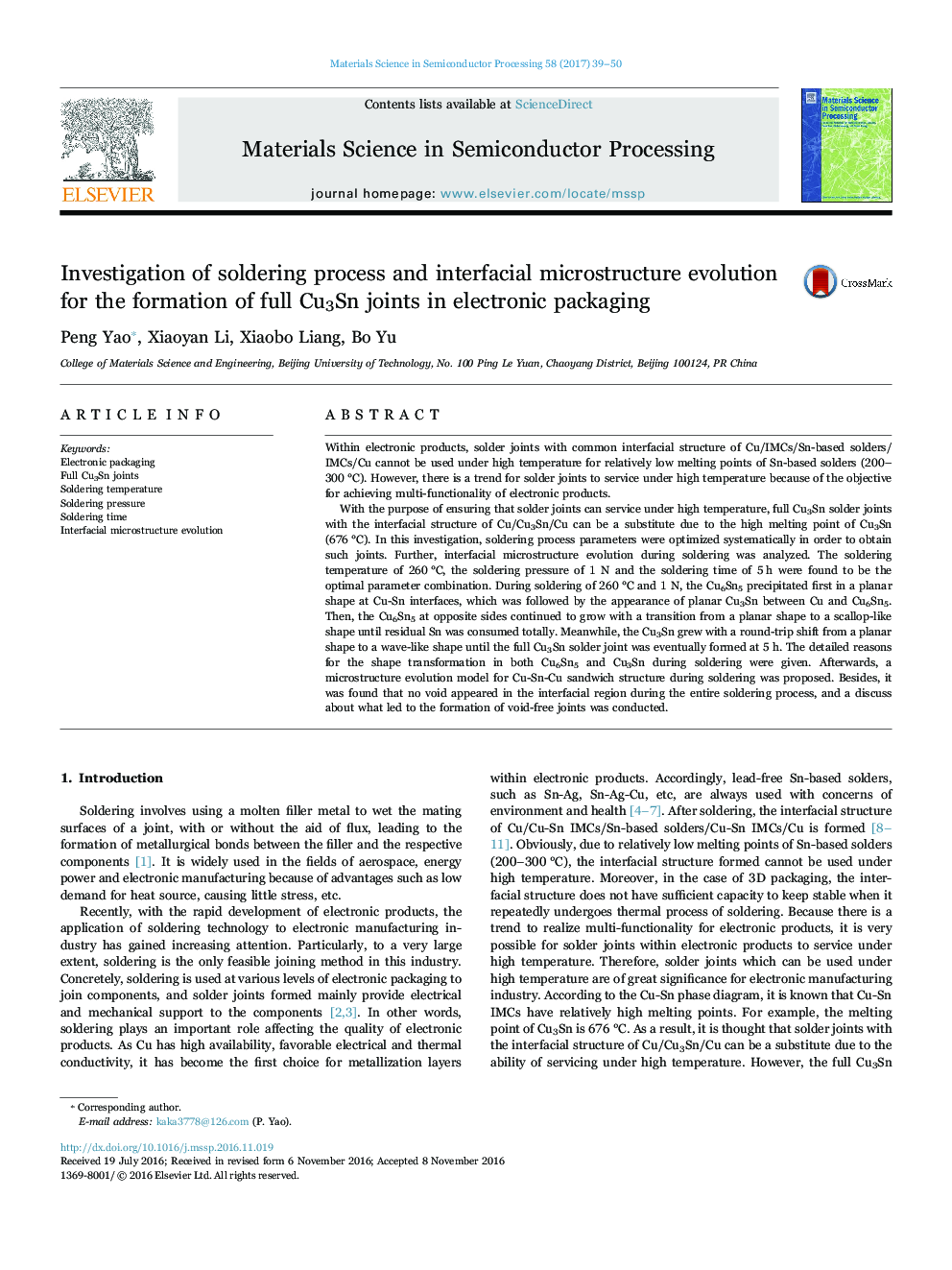| Article ID | Journal | Published Year | Pages | File Type |
|---|---|---|---|---|
| 5006254 | Materials Science in Semiconductor Processing | 2017 | 12 Pages |
Abstract
With the purpose of ensuring that solder joints can service under high temperature, full Cu3Sn solder joints with the interfacial structure of Cu/Cu3Sn/Cu can be a substitute due to the high melting point of Cu3Sn (676 °C). In this investigation, soldering process parameters were optimized systematically in order to obtain such joints. Further, interfacial microstructure evolution during soldering was analyzed. The soldering temperature of 260 °C, the soldering pressure of 1 N and the soldering time of 5 h were found to be the optimal parameter combination. During soldering of 260 °C and 1 N, the Cu6Sn5 precipitated first in a planar shape at Cu-Sn interfaces, which was followed by the appearance of planar Cu3Sn between Cu and Cu6Sn5. Then, the Cu6Sn5 at opposite sides continued to grow with a transition from a planar shape to a scallop-like shape until residual Sn was consumed totally. Meanwhile, the Cu3Sn grew with a round-trip shift from a planar shape to a wave-like shape until the full Cu3Sn solder joint was eventually formed at 5 h. The detailed reasons for the shape transformation in both Cu6Sn5 and Cu3Sn during soldering were given. Afterwards, a microstructure evolution model for Cu-Sn-Cu sandwich structure during soldering was proposed. Besides, it was found that no void appeared in the interfacial region during the entire soldering process, and a discuss about what led to the formation of void-free joints was conducted.
Keywords
Related Topics
Physical Sciences and Engineering
Engineering
Electrical and Electronic Engineering
Authors
Peng Yao, Xiaoyan Li, Xiaobo Liang, Bo Yu,
